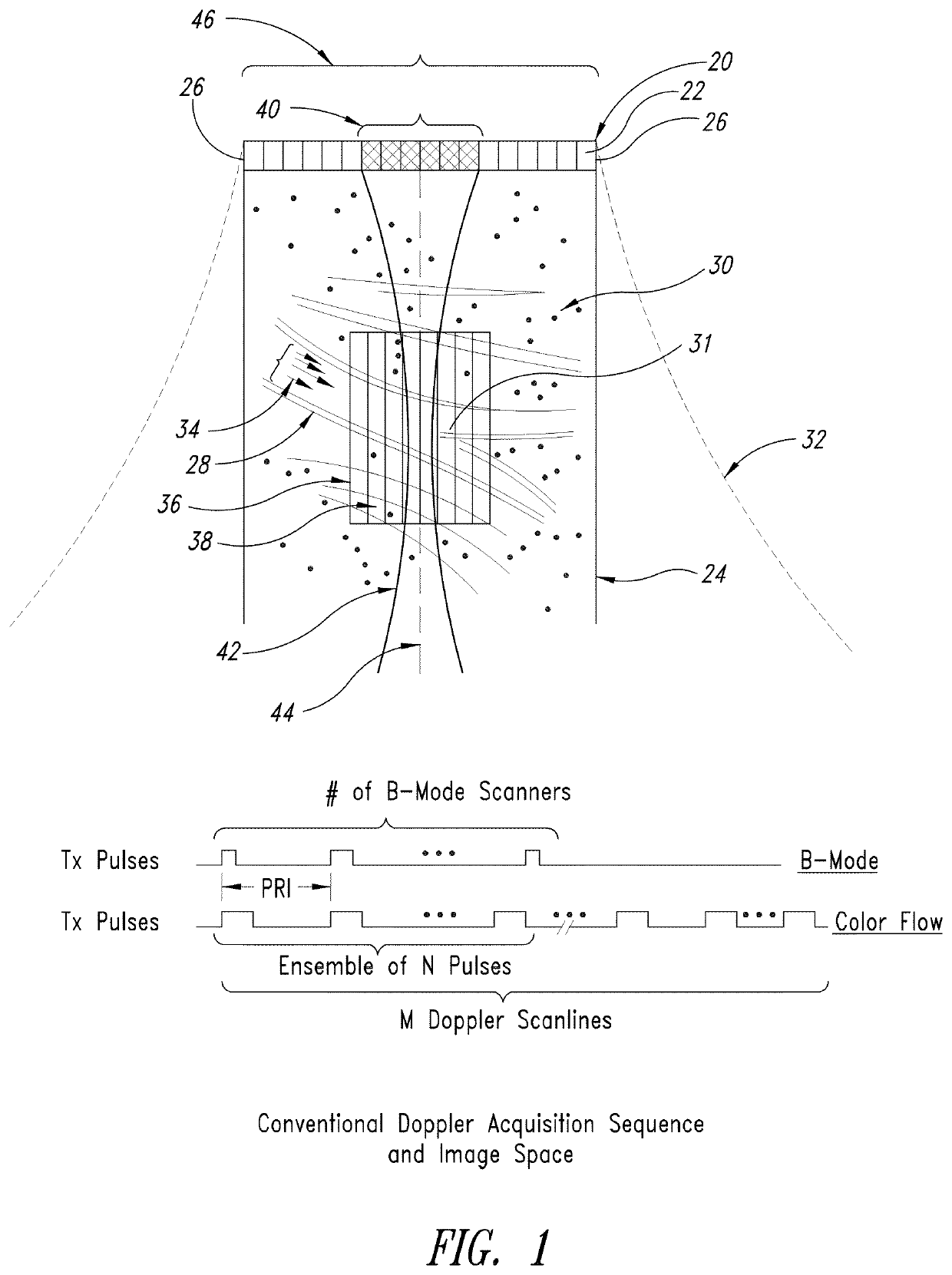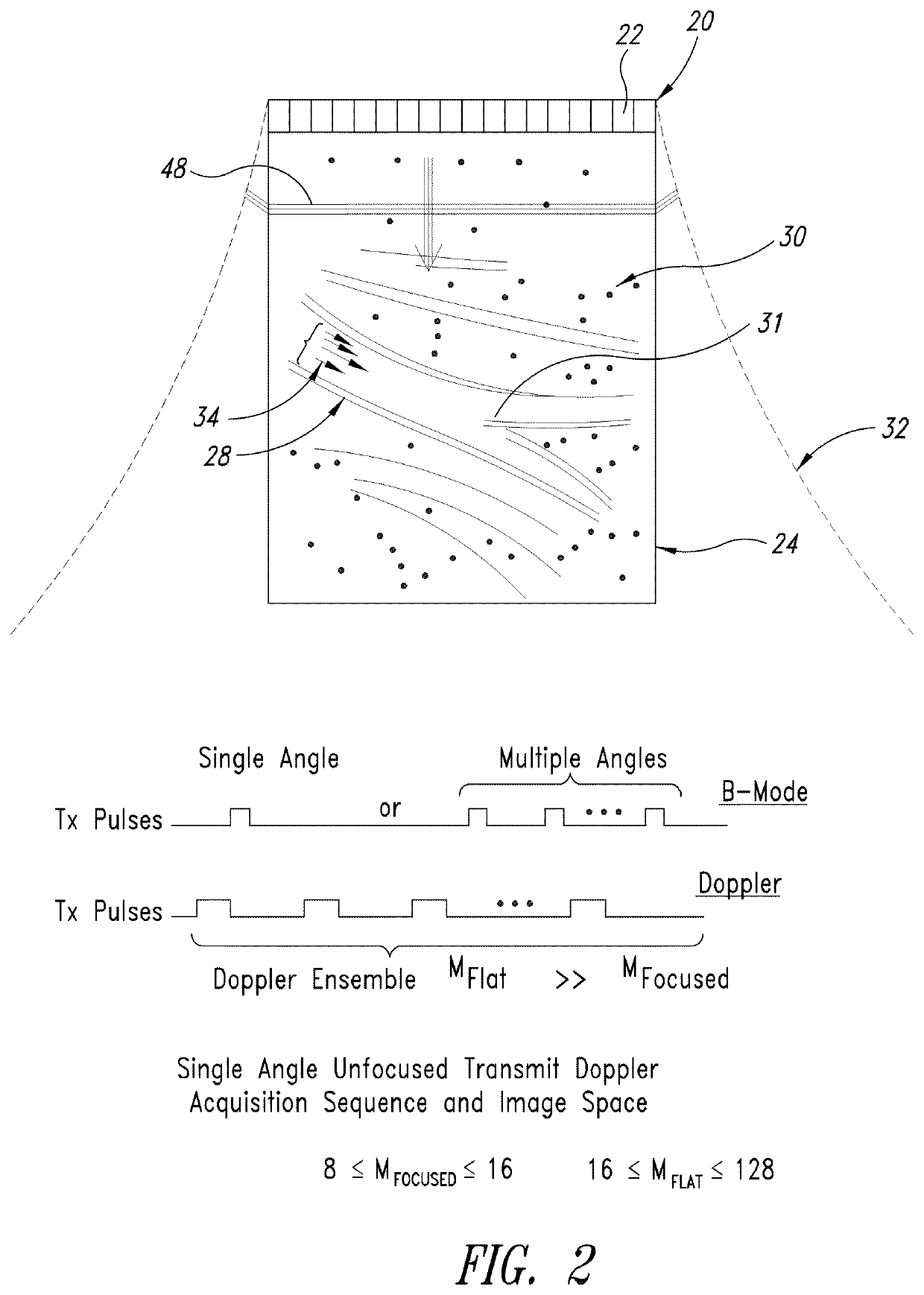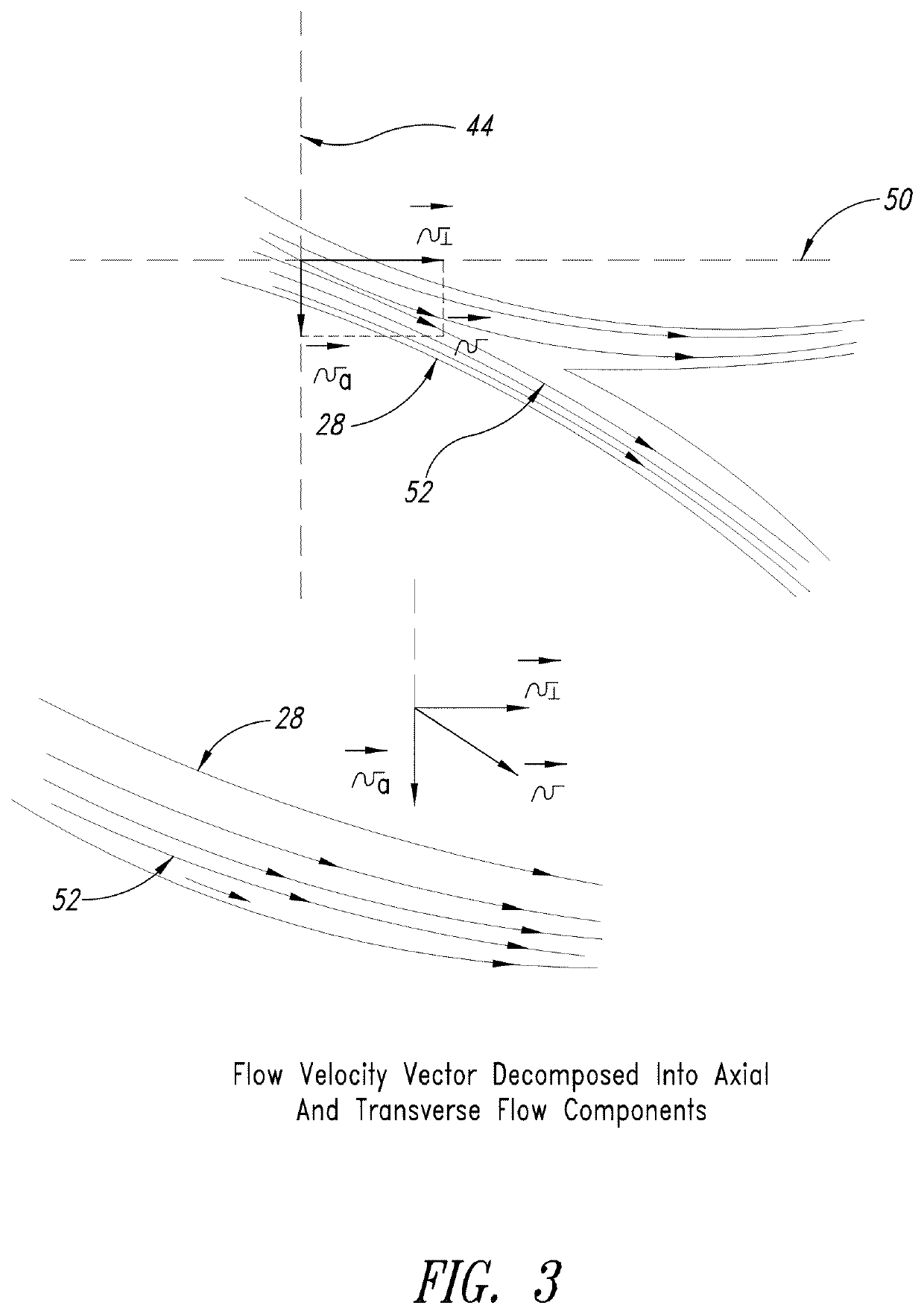High frame rate quantitative doppler flow imaging using unfocused transmit beams
a quantitative doppler and transmit beam technology, applied in tomography, instruments, using reradiation, etc., can solve the problems of more extensive processing capabilities, too high equipment costs for significant adoption, and more expensive ultrasound systems, so as to improve the contrast resolution of the final image and enhance the acoustic information
- Summary
- Abstract
- Description
- Claims
- Application Information
AI Technical Summary
Benefits of technology
Problems solved by technology
Method used
Image
Examples
Embodiment Construction
[0056]A conventional Doppler acquisition sequence and image scene are shown in FIG. 1 for a single beam direction that consists of an ensemble of N transmit-receive events (with 8≤N≤16). Conventional ultrasound systems form focused transmit beams and focus the received data dynamically, using delay-and-sum beam forming and several other processing steps required to form the image. In applicants' U.S. patent application Ser. No. 11 / 911,633, entitled “Ultrasound Imaging System with Pixel Oriented Processing,” a method of image reconstruction is described below in conjunction with FIGS. 7-10 that greatly reduces the processing load compared to conventional beam forming and permits using a wide variety of non-conventional transmit fields.
[0057]For example, one non-conventional transmit field is the flat-focus transmit mode in which all transducer elements are fired in phase to produce a segment of a plane wave (for a linear array) that can be used to ensonify the entire field of view wi...
PUM
 Login to View More
Login to View More Abstract
Description
Claims
Application Information
 Login to View More
Login to View More - R&D
- Intellectual Property
- Life Sciences
- Materials
- Tech Scout
- Unparalleled Data Quality
- Higher Quality Content
- 60% Fewer Hallucinations
Browse by: Latest US Patents, China's latest patents, Technical Efficacy Thesaurus, Application Domain, Technology Topic, Popular Technical Reports.
© 2025 PatSnap. All rights reserved.Legal|Privacy policy|Modern Slavery Act Transparency Statement|Sitemap|About US| Contact US: help@patsnap.com



